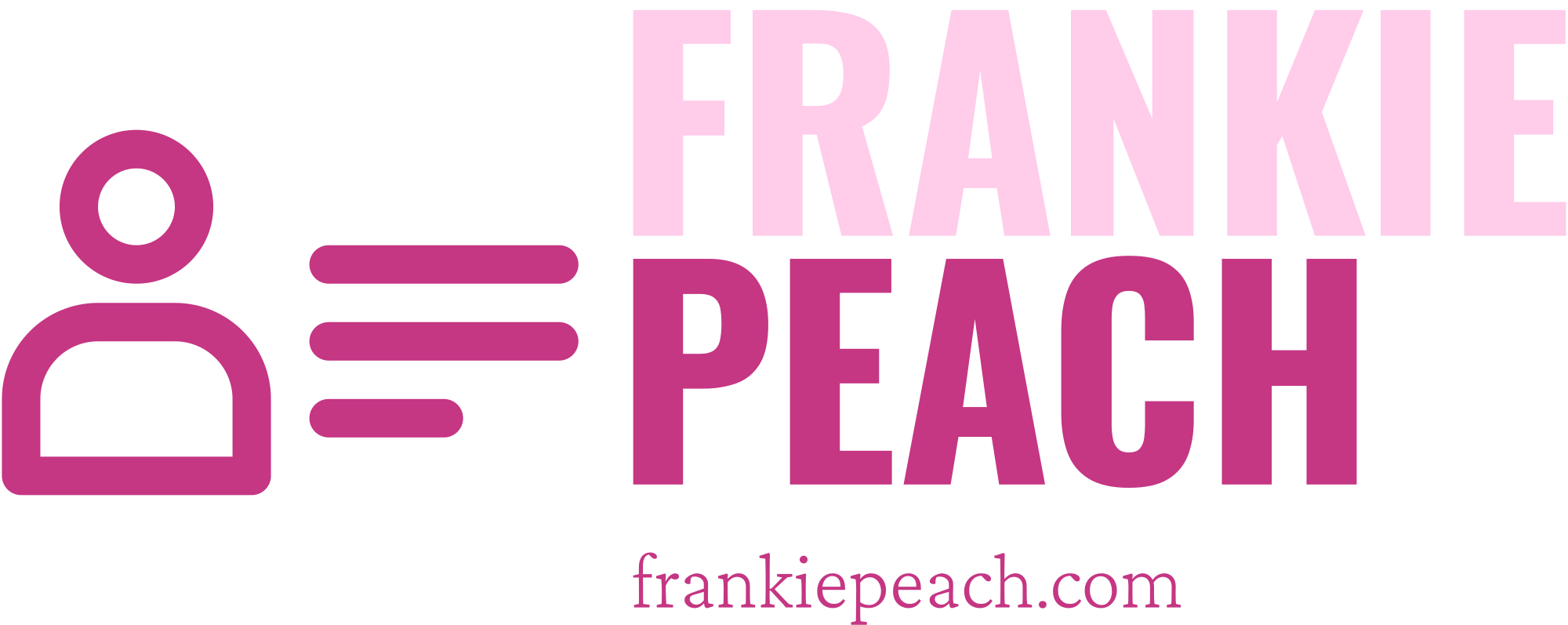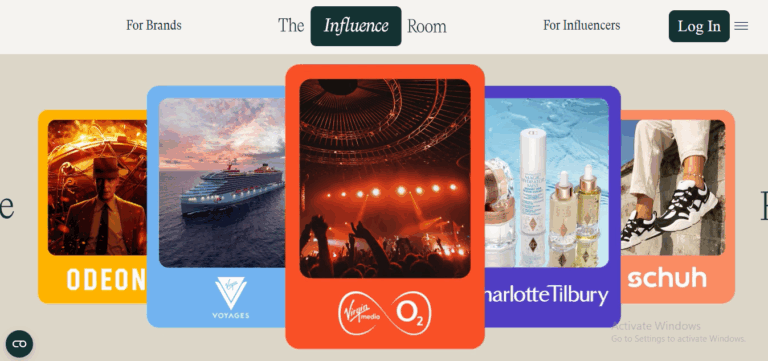Yo, so here’s the tea—The Influence Room is cool and all, but in 2025, the influencer game is straight-up wild. We’ve got tools and platforms popping up left, right, and center, promising to make your next brand collab feel like an Oscar-winning partnership.
I’ve tried and tested a bunch of these bad boys, so let me break it down for you in a way that doesn’t make you want to nap by paragraph two. I’m ranking based on my experience (yep, I’m the guinea pig here), the feature set, and pricing. Let’s go.
1. Mavrck
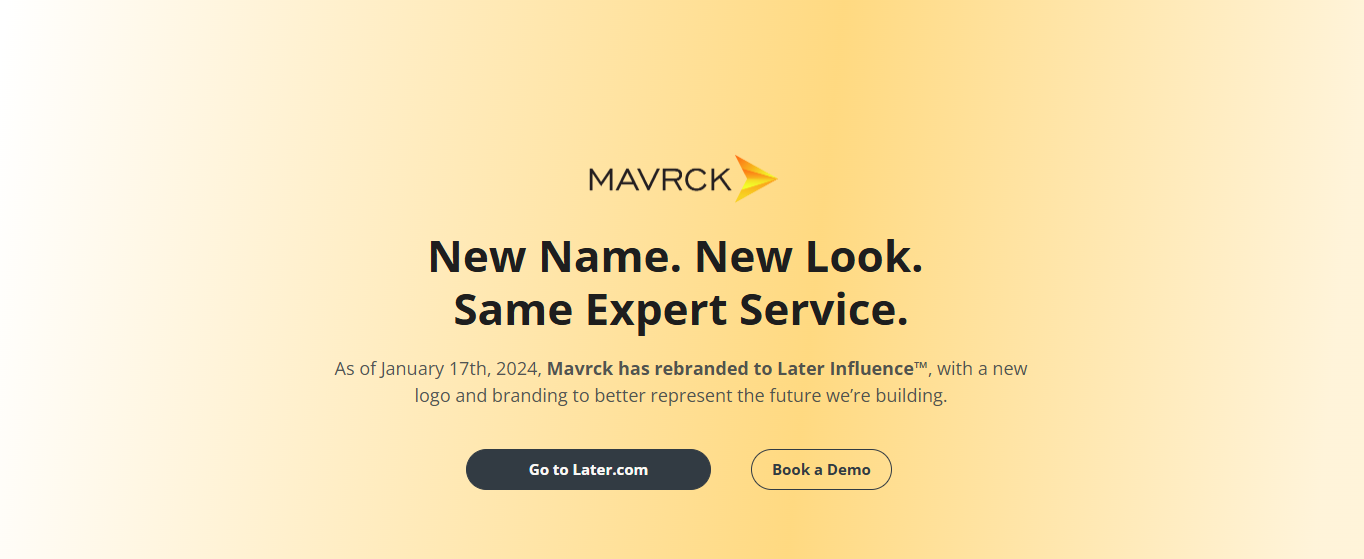
The all-in-one beast. Like the Swiss Army Knife of influencer platforms.
What I Liked:
- Enterprise-level features—this one’s heavy-duty.
- Love the automation. Everything from discovery to contracting is smooth as butter.
- Great for large-scale campaigns and UGC collection.
What I Didn’t:
- Pricey AF. Startups? Nah, maybe don’t look here.
- UI feels like it’s designed for a robot. Very corporate.
Features:
- Micro to macro influencer search
- Workflow automation
- Loyalty and ambassador programs
Pricing:
Custom pricing. Translation? If you gotta ask, you probs can’t afford it.
2. Grin
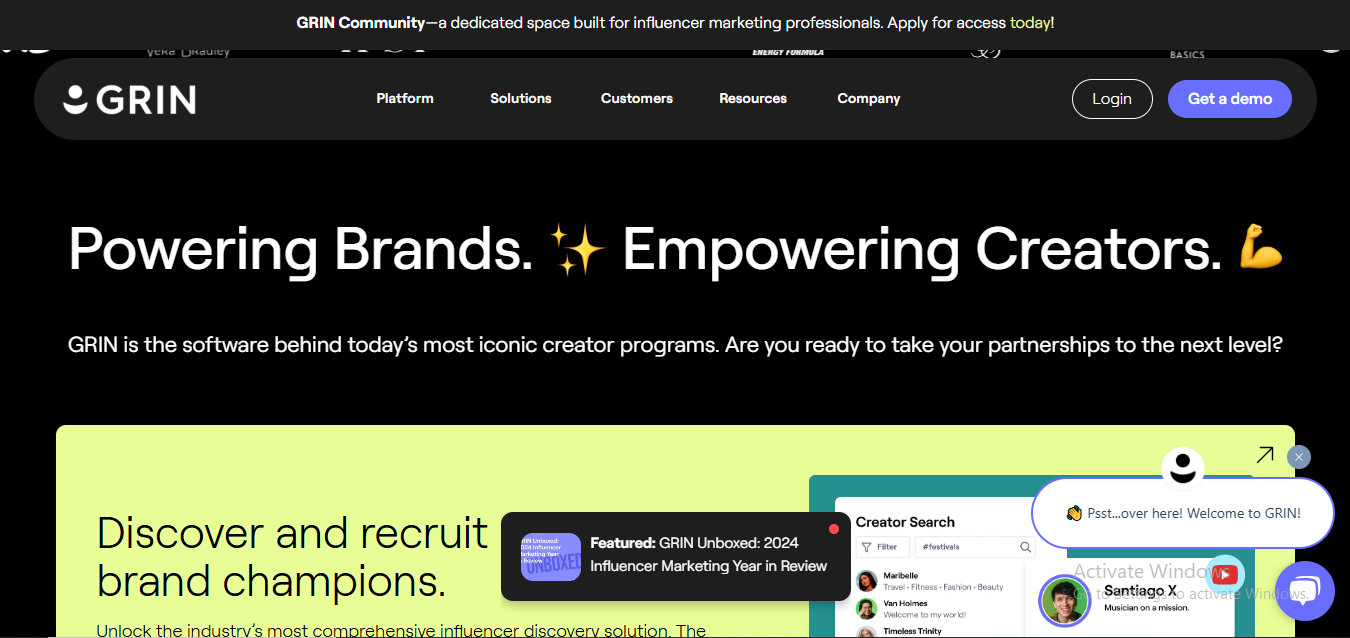
The “cool nerd” in the room. Analytics wizard with a chill vibe.
What I Liked:
- Stellar integrations with eCommerce (Shopify, Woo, Magento—ya name it).
- Their reporting game is strong.
- Creator relationship CRM is lit.
What I Didn’t:
- Learning curve = steep. Not newbie-friendly.
- No built-in influencer marketplace. You bring your own squad.
Features:
- Influencer CRM
- Product seeding
- ROI tracking
Pricing:
Mid-high. You’ll cry a little at first, but it’s worth it if you go all in.
3. Influencity

Underrated gem. Kinda like that indie band you love before they blow up.
What I Liked:
- Advanced AI-powered search—super specific filters.
- Killer data analytics.
- Scales well for agencies.
What I Didn’t:
- Interface isn’t the cutest. Could use a glow-up.
- Support response is a bit meh.
Features:
- AI influencer matching
- Fake follower detection
- Campaign management
Pricing:
Very reasonable. Starts at “freelancer-friendly” and scales up.
4. Hashtag Paid
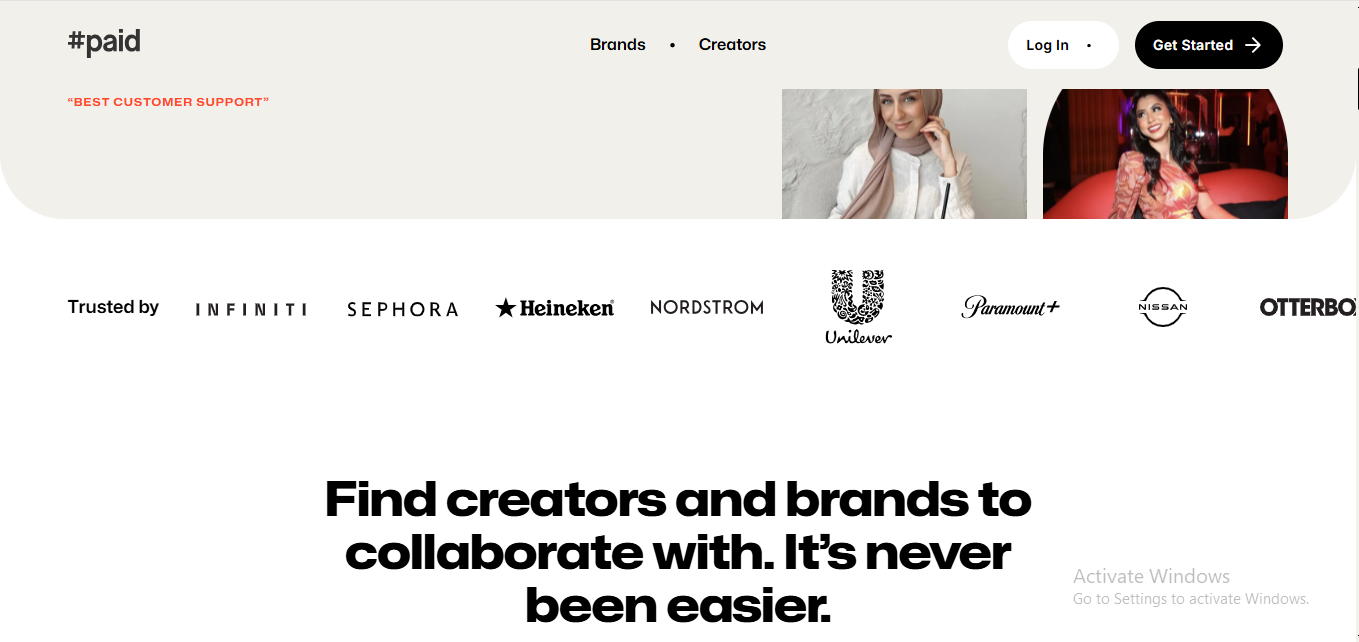
The Tinder for brand-creator matchmaking. Swipe right, baby.
What I Liked:
- Super creative-first platform. Focuses on brand voice.
- Handpicked creator matches—saves time.
- Built-in messaging and contracting.
What I Didn’t:
- Limited pool if you’re not in North America.
- Less control over manual outreach.
Features:
- Creator briefs
- Hands-on matchmaking
- Content usage rights built-in
Pricing:
Flexible, but not cheap. Think premium dating app vibes.
5. Lolly
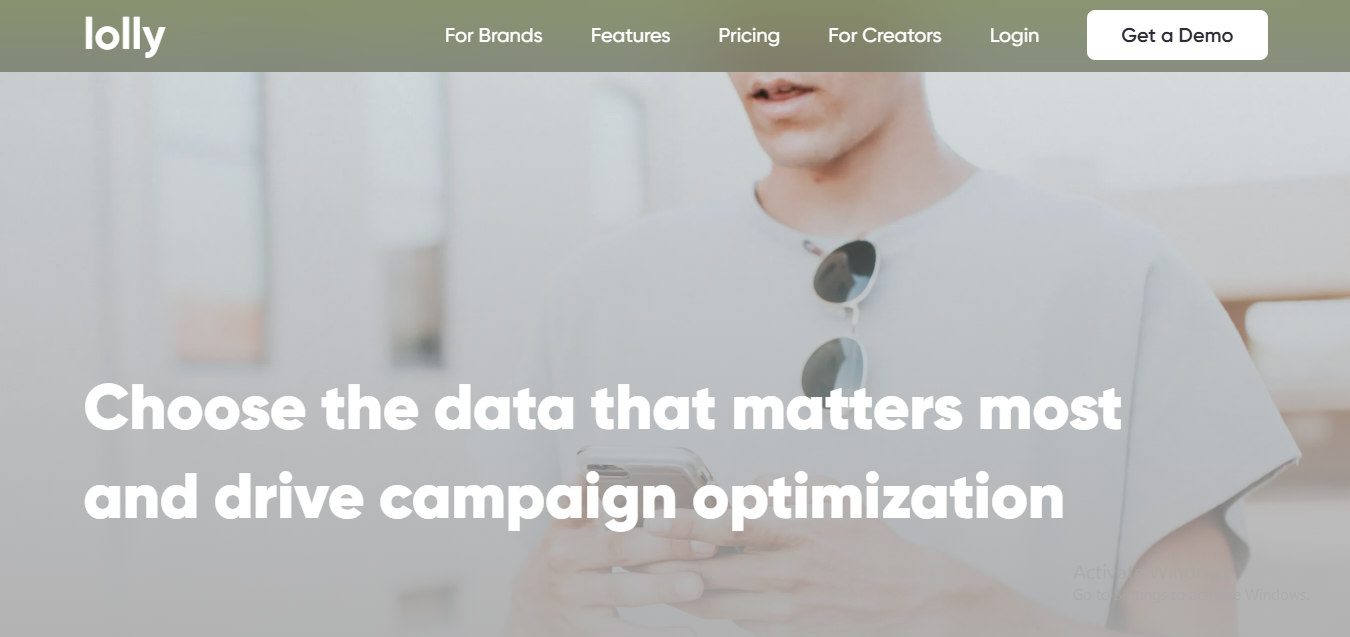
New kid with TikTok energy. It’s all vibes and visuals.
What I Liked:
- Perfect for Gen Z-style campaigns.
- Focus on short-form video = chef’s kiss.
- Interface feels like you’re on social media.
What I Didn’t:
- Features still developing—feels “beta” sometimes.
- Not ideal for big campaign management (yet).
Features:
- TikTok & Reels centric
- Visual-first influencer search
- Trend tracking
Pricing:
Start-up friendly. Great entry point if you’re testing waters.
6. The Cirqle
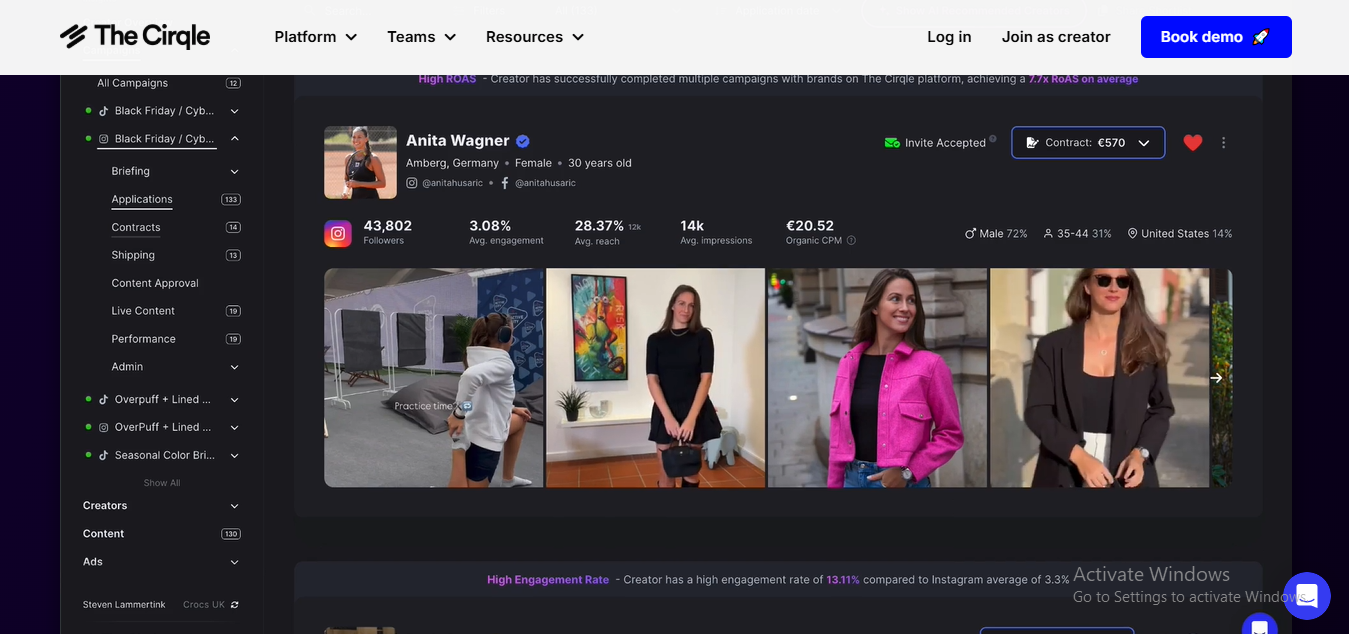
Fashion-forward and very “SoHo House meets Google Docs.”
What I Liked:
- Sleek UI. Campaigns feel like you’re managing a fashion week show.
- Love their data visualization and storytelling tools.
- Great for luxury & lifestyle brands.
What I Didn’t:
- Slightly pretentious? Not for every brand vibe.
- Some users might find it too stylized.
Features:
- Real-time content tracking
- Payment automation
- Influencer scoring
Pricing:
Mid-tier. Not bad for the glam you get.
7. Aspire
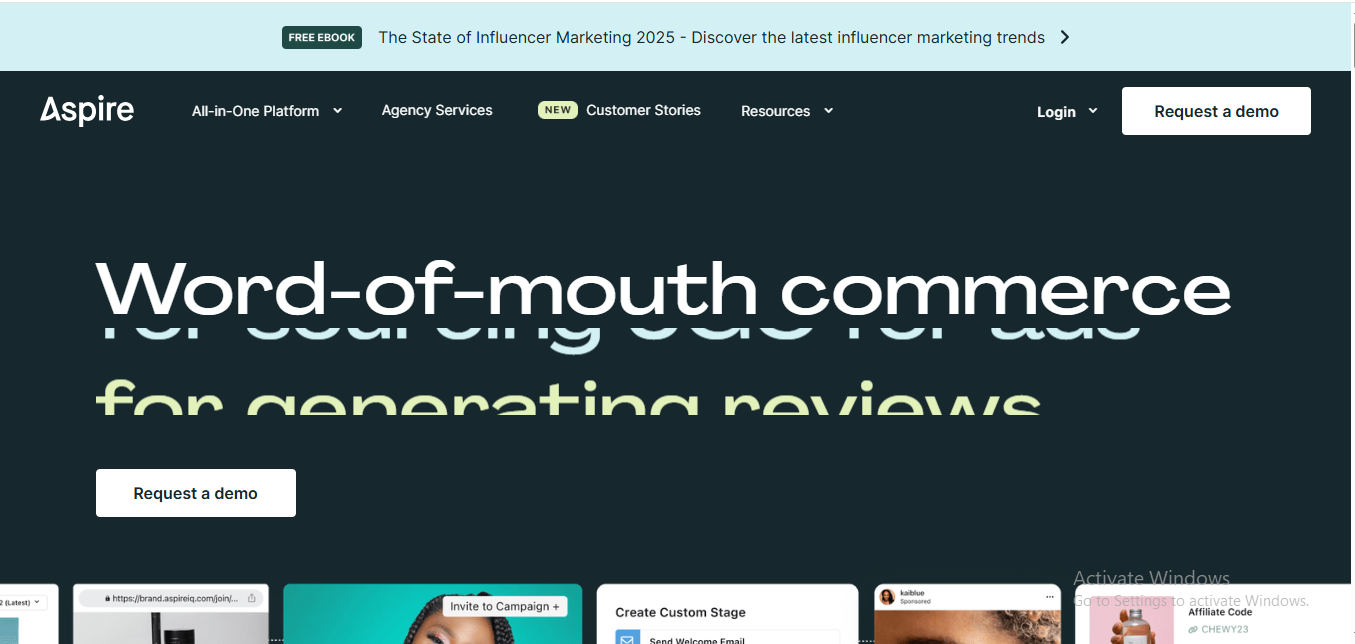
Think Pinterest meets influencer CRM. Cozy, yet powerful.
What I Liked:
- Super clean UI.
- Campaign automation is tight.
- Good mix of nano and macro creators.
What I Didn’t:
- Can lag a bit when managing huge datasets.
- Influencer search could be faster.
Features:
- Discovery engine
- Campaign and ROI dashboards
- Direct messaging
Pricing:
Mid-range with lots of scaling options.
8. Upfluence
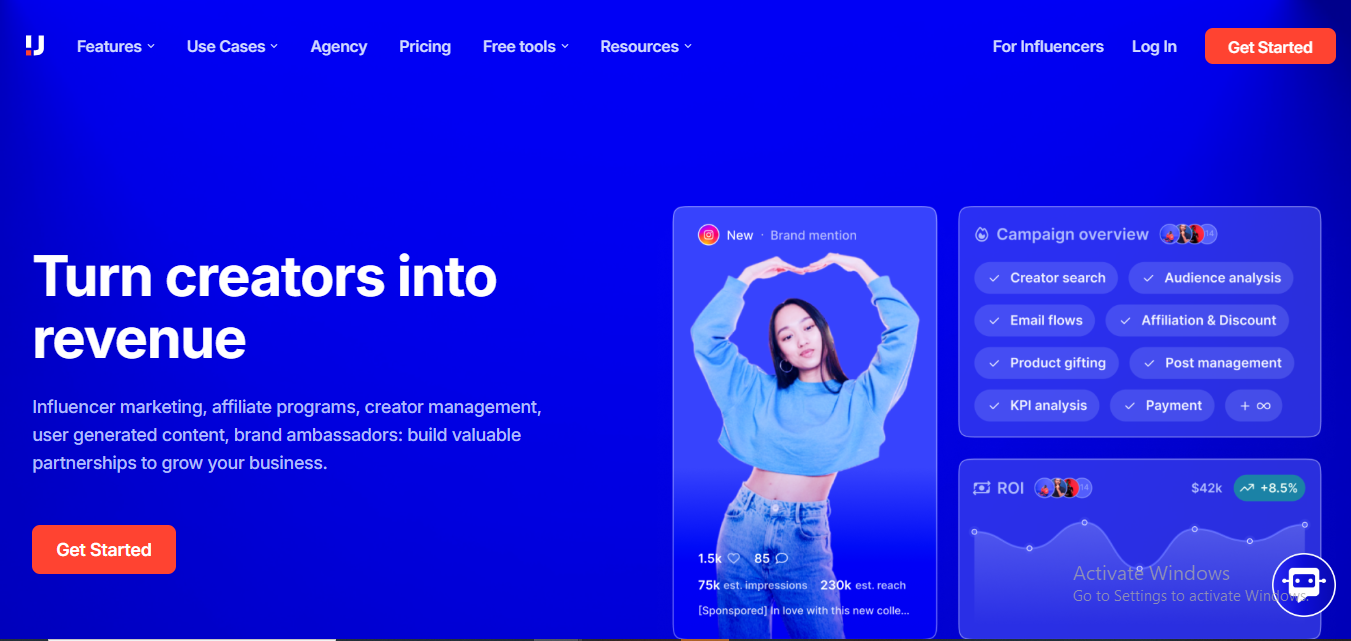
The “business casual” of influencer platforms. Slick but all about work.
What I Liked:
- SEO-style filters for finding influencers? Yes, please.
- Great integrations with ecom and CRM tools.
- Awesome Chrome extension.
What I Didn’t:
- UI is a lil dry. Could use some flair.
- No built-in marketplace.
Features:
- Influencer analytics
- Product gifting
- Affiliate tracking
Pricing:
Upper-mid. A good pick for eCommerce heavyweights.
9. CreatorIQ
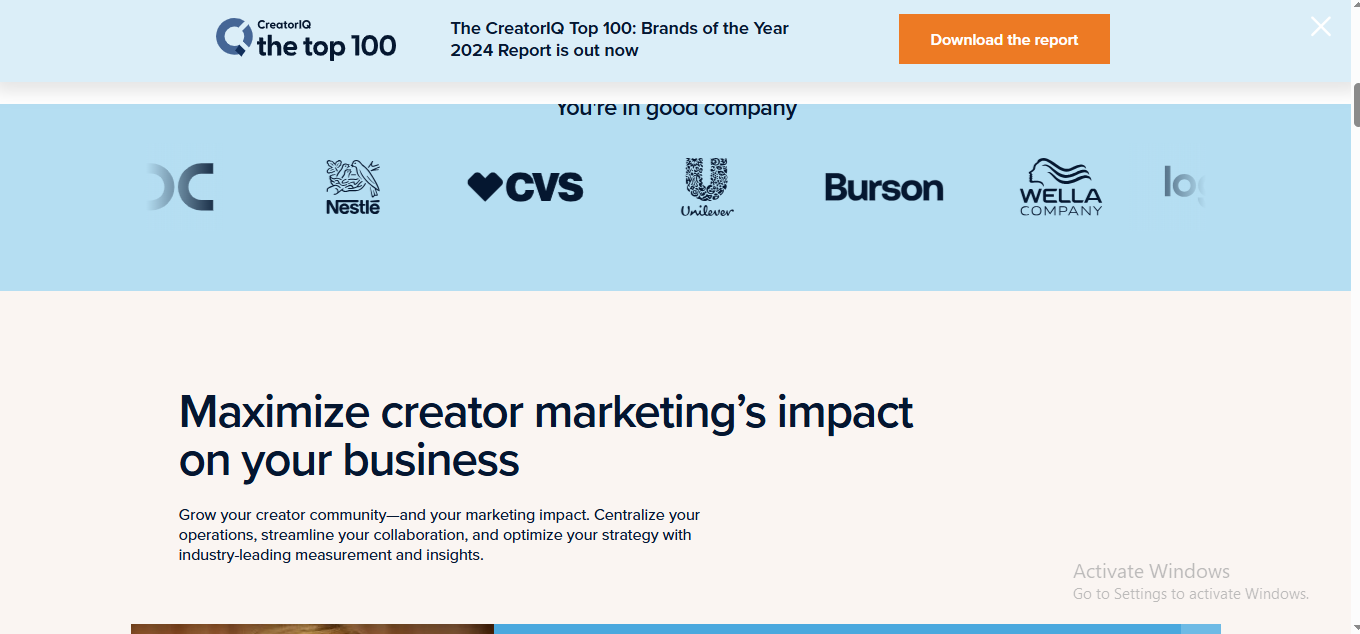
The Marvel Cinematic Universe of influencer marketing.
What I Liked:
- All the big brands are here. Serious clout.
- Smart influencer vetting with fraud detection.
- White-label dashboards for agencies.
What I Didn’t:
- Big learning curve
- Definitely $$$
Features:
- Custom workflows
- Cross-platform data aggregation
- Talent management
Pricing:
Enterprise only. If you’re asking, it’s already out of budget.
10. The Influence Room
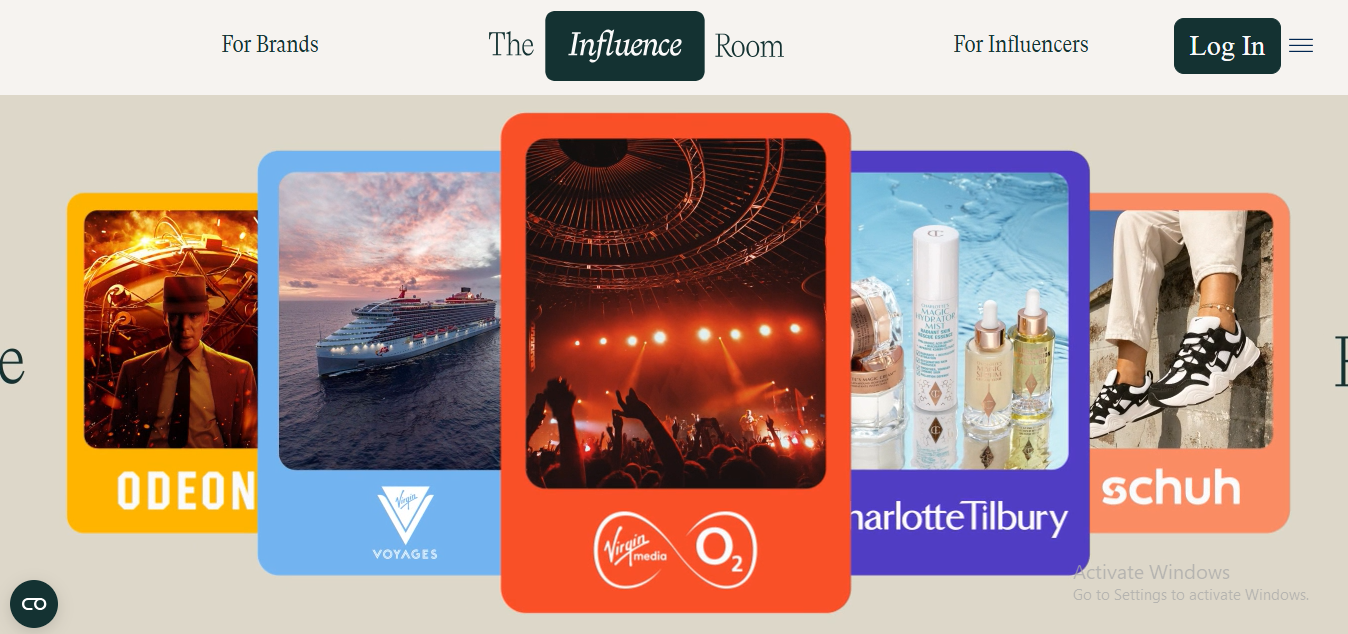
Let’s start with the OG—’cause duh.
What I Liked:
- It’s like a cocktail party for brands and influencers. Super relationship-first.
- No more “spray and pray” email blasts. You pitch, they pick you.
- Classy interface, easy to get around.
What I Didn’t:
- Works better if you’re already kinda known.
- Campaign volume’s a bit low if you’re not in beauty/fashion/lifestyle.
- Not super scalable for big-time agencies.
Features:
- Bid-to-work format
- Brand-influencer matchmaking
- Creator profiles with campaign history
Pricing:
Custom. Not wallet-breaking, but definitely not bargain bin either.
11. Popular Pays
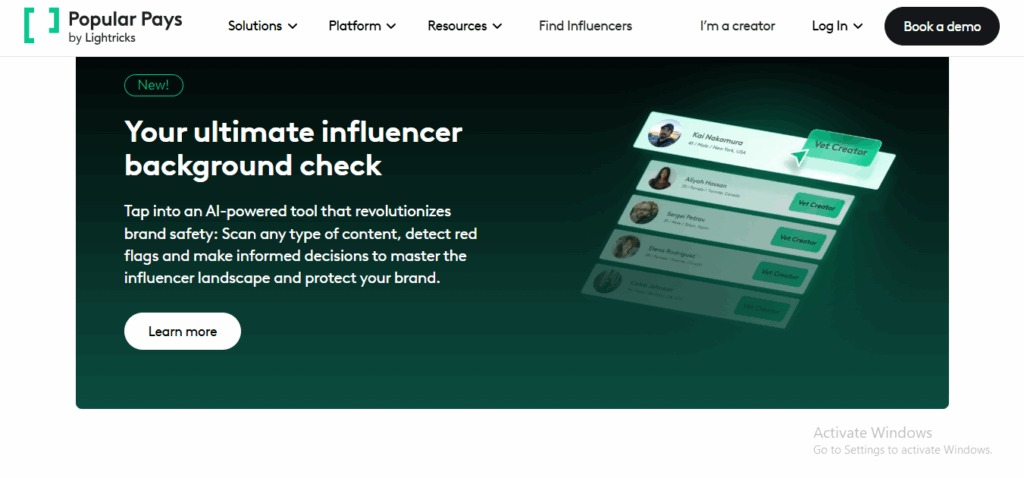
This one’s got influencer Tinder energy—swipe, match, collab.
What I Liked:
- Clean, modern UX.
- The marketplace is poppin’—tons of creators available.
- You can run your own content request campaign or browse pre-vetted collabs.
What I Didn’t:
- Some creators feel a little too “template-y.”
- A bit limited outside North America.
Features:
- Campaign builder
- Collab request board
- Analytics with performance-based ranking
Pricing:
Starts affordably. Grows with you. Solid bang-for-buck.
12. Collabstr
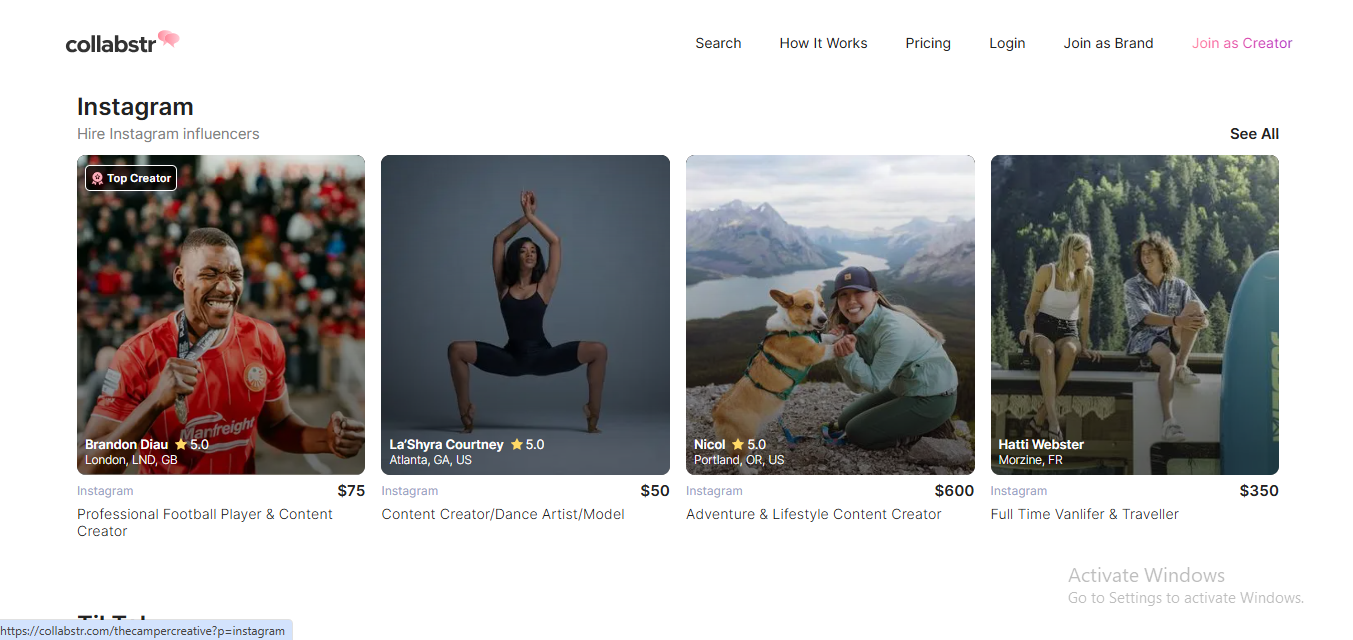
Low-key awesome for budget collabs. Also, the name slaps.
What I Liked:
- Super beginner-friendly. It’s like ordering collabs from a menu.
- Transparent pricing—love that.
- No subscription needed for small brands.
What I Didn’t:
- Not as strong with analytics.
- Limited campaign management features.
Features:
- Influencer profiles with set rates
- Content previews
- One-off or bulk orders
Pricing:
Pay-per-collab. $50 to $500 range. Perfect for startups and side hustlers.
13. Kolsquare
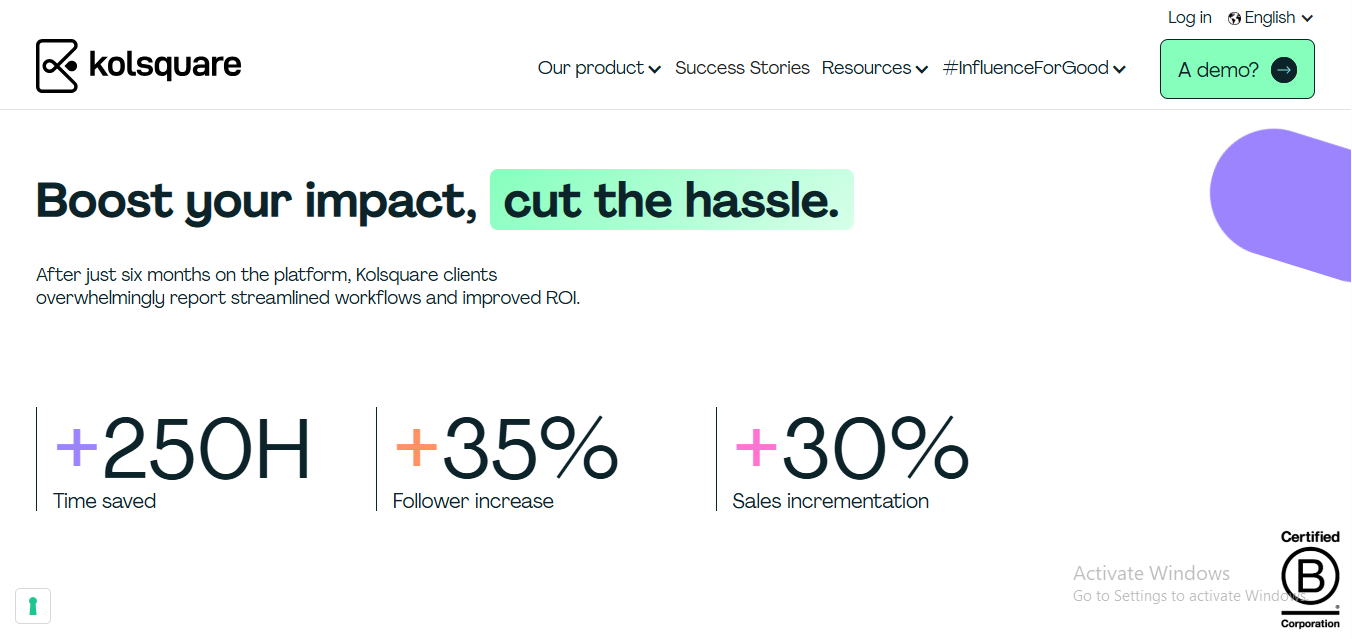
This one’s giving “data nerd but make it glam.”
What I Liked:
- You get deep AF analytics—demographics, psychographics, all the ‘graphics.
- Pretty sweet influencer search engine.
- Europe-friendly (which is rare tbh).
What I Didn’t:
- Setup takes time. You’ll need snacks.
- UI isn’t the most intuitive for newbies.
Features:
- Performance predictions
- Influencer CRM
- Social listening and sentiment analysis
Pricing:
Custom. Mid to high depending on campaign size. Worth it if you love numbers.
14. Captiv8
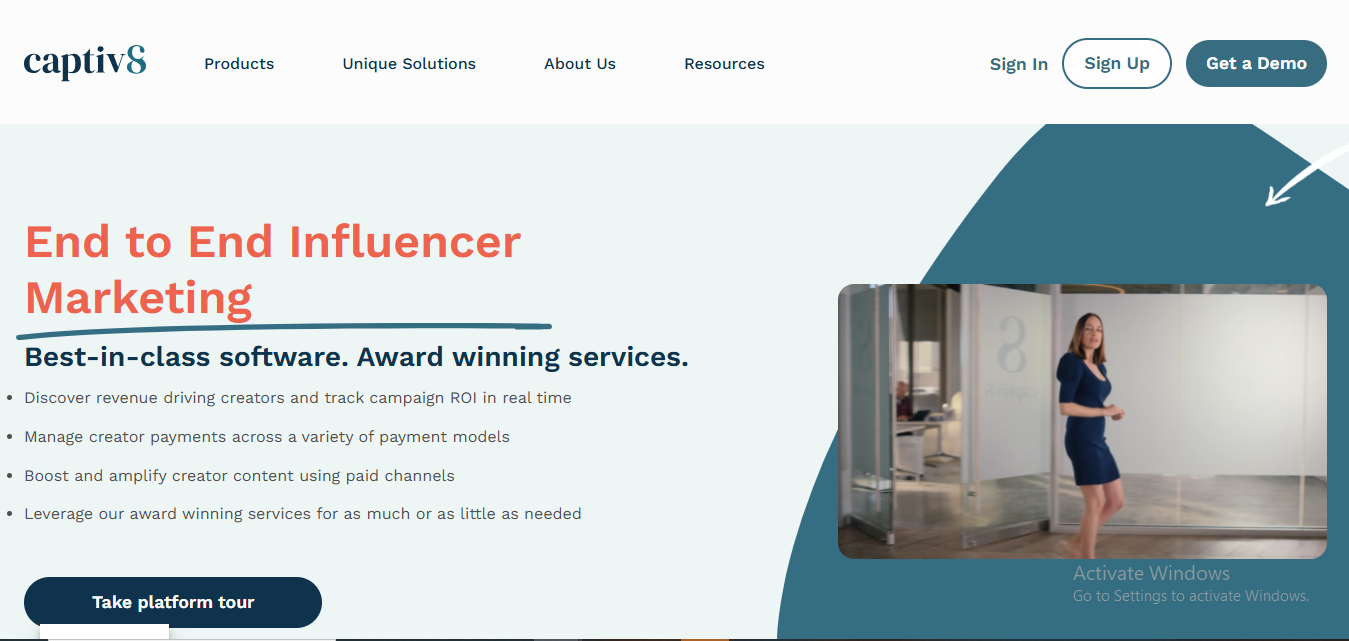
Hollywood-level tech. This one’s got range.
What I Liked:
- Real-time campaign tracking is fire.
- Deep audience insights with fraud detection (yup, no more fake follower nonsense).
- Great for big brands and agencies.
What I Didn’t:
- Steep price tag.
- Not super DIY-friendly unless you’re seasoned.
Features:
- Custom campaign builder
- Predictive analytics
- Integration with eCommerce and affiliate platforms
Pricing:
Enterprise level. Startups may wanna pass unless you just got funding.
15. TRIBE
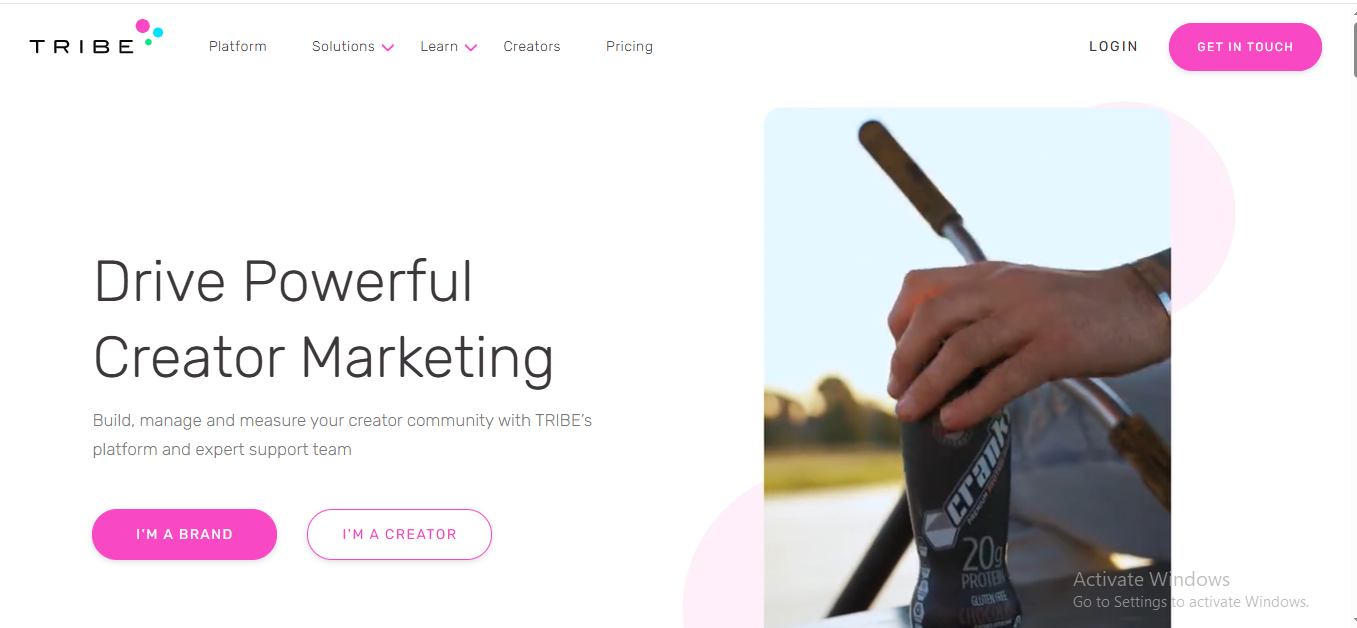
UGC heaven. Think of it as the Etsy of influencer marketing.
What I Liked:
- Amazing platform for user-generated content (UGC).
- You post a brief, creators pitch you ideas—kinda like Project Runway but for content.
- Super flexible campaign types.
What I Didn’t:
- Works better for consumer goods than B2B.
- Some campaigns take longer to get pitches.
Features:
- Content-first creator marketplace
- Built-in payment and licensing
- TikTok and Instagram heavy
Pricing:
Flexible. Pay per piece or per campaign. UGC starts around $100/piece.
16. Braze
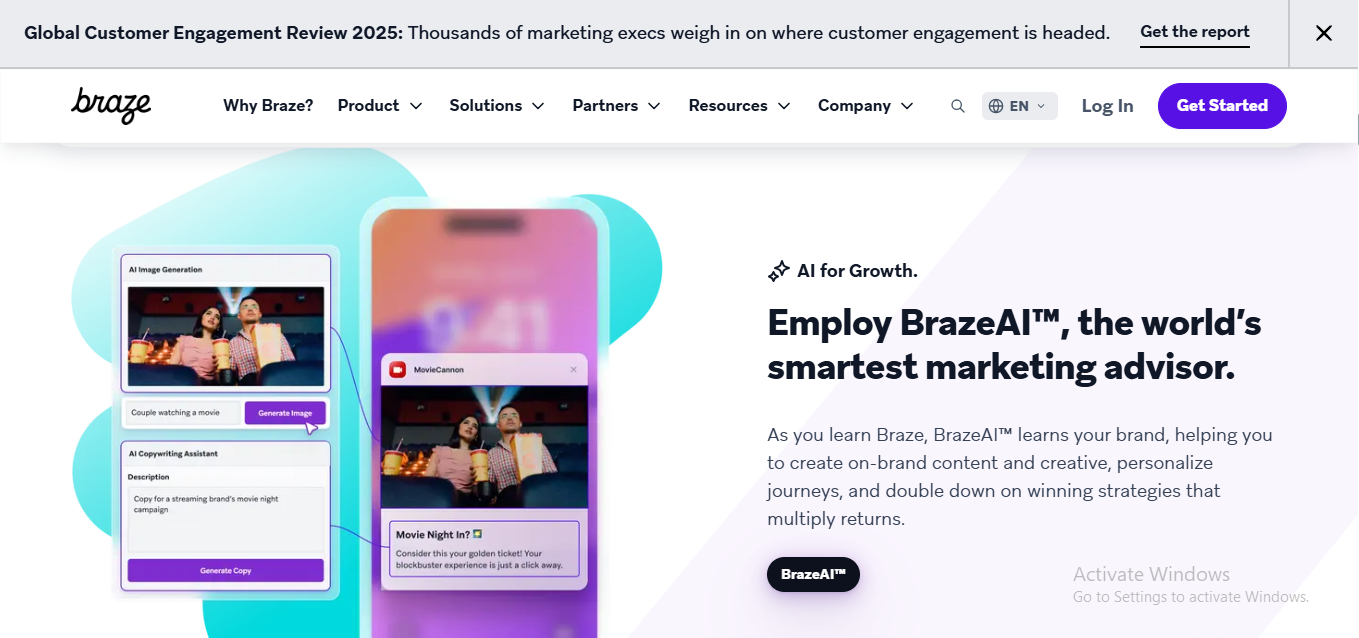
Okay, so technically this isn’t an influencer platform. But hear me out.
What I Liked:
- If you’re doing influencer work AND want to crush email/SMS/CRM, Braze is king.
- You can personalize post-collab customer journeys.
- Real-time data and engagement triggers
What I Didn’t:
- Not designed specifically for influencer management.
- Steep learning curve unless you’re a marketer with caffeine IVs.
Features:
- Omni-channel engagement
- Audience segmentation
- Custom triggers for post-campaign flow
Pricing:
Premium SaaS pricing. If you want full-stack marketing muscle, it’s worth every penny.
17. IZEA
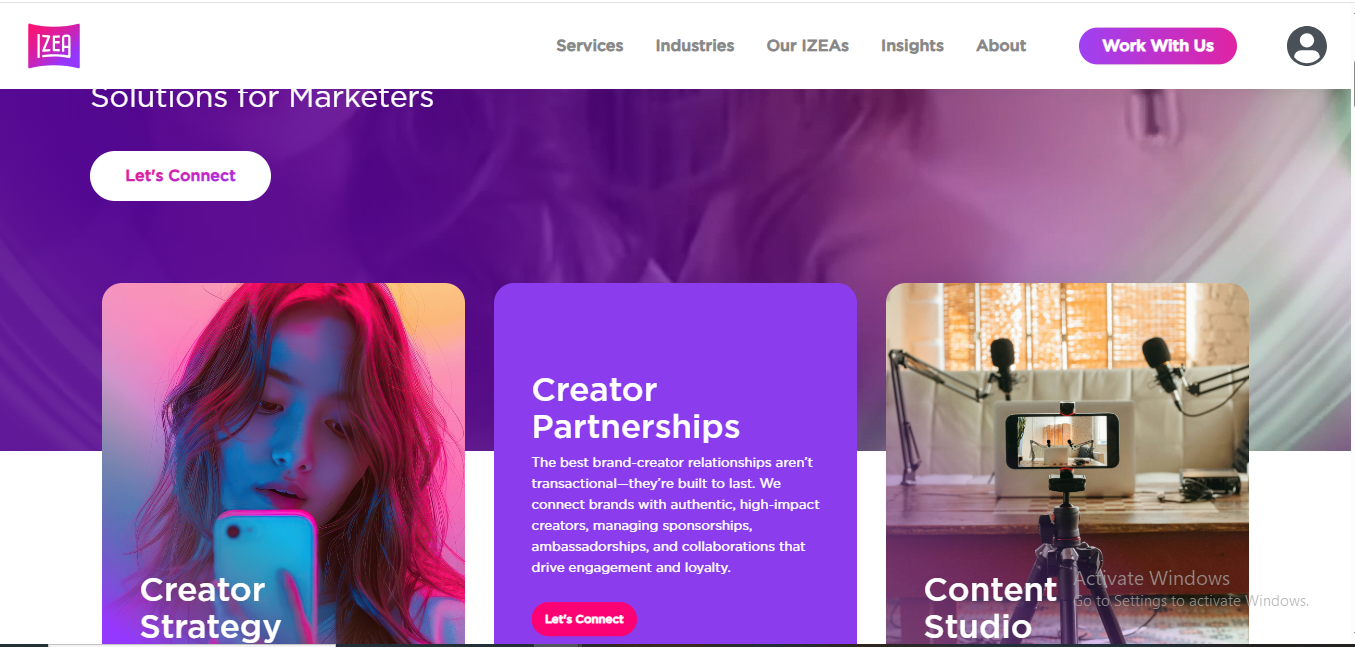
The OG of influencer marketplaces. Like, they were doing this before it was cool.
What I Liked:
- Massive creator network. Literally millions.
- Flexible campaign types (sponsored content, UGC, affiliate stuff, the whole buffet).
- Love the managed services if you’re feeling lazy—or “strategically hands-off,” as I like to say.
What I Didn’t:
- The dashboard feels a lil’ outdated.
- Reporting’s decent but could use a facelift.
Features:
- Self-serve and managed campaigns
- Creator marketplace
- Automated payments
Pricing:
Very flexible. They’ve got entry points for small biz and serious stacks for big brands.
18. Insense
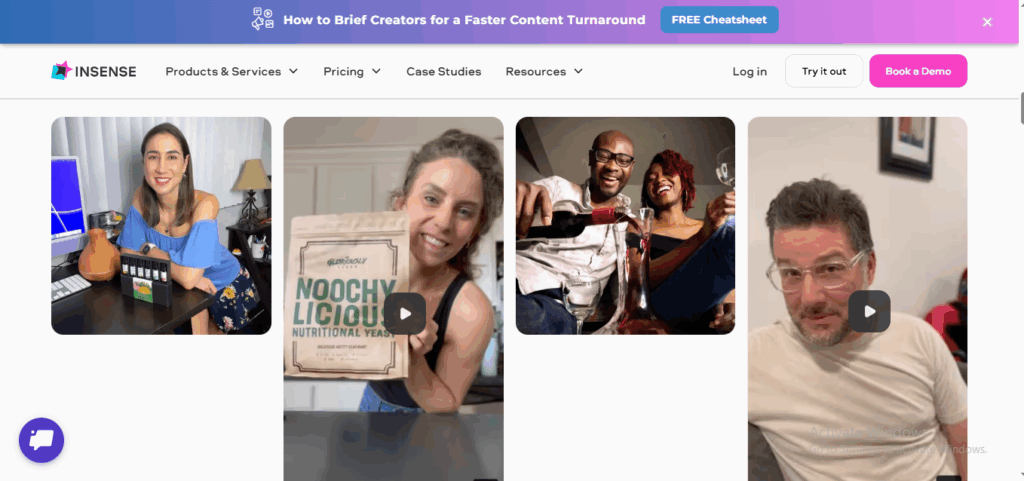
If UGC was a dating app, Insense would be the one everyone’s swiping right on.
What I Liked:
- Seamless UGC ordering. Seriously—it’s like ordering takeout but for video content.
- Great for TikTok and Reels.
- Integrates with Meta Ads so you can turn influencer vids into paid ads FAST.
What I Didn’t:
- Not ideal for deep influencer relationships or long-term collabs.
- Marketplace could be more diverse globally.
Features:
- UGC campaign builder
- TikTok/Reels-centric content creation
- Direct licensing for ads
Pricing:
Per-collab pricing. Starts at $100ish for simple content. Budget-friendly for short-form goals.
19. Influence.co
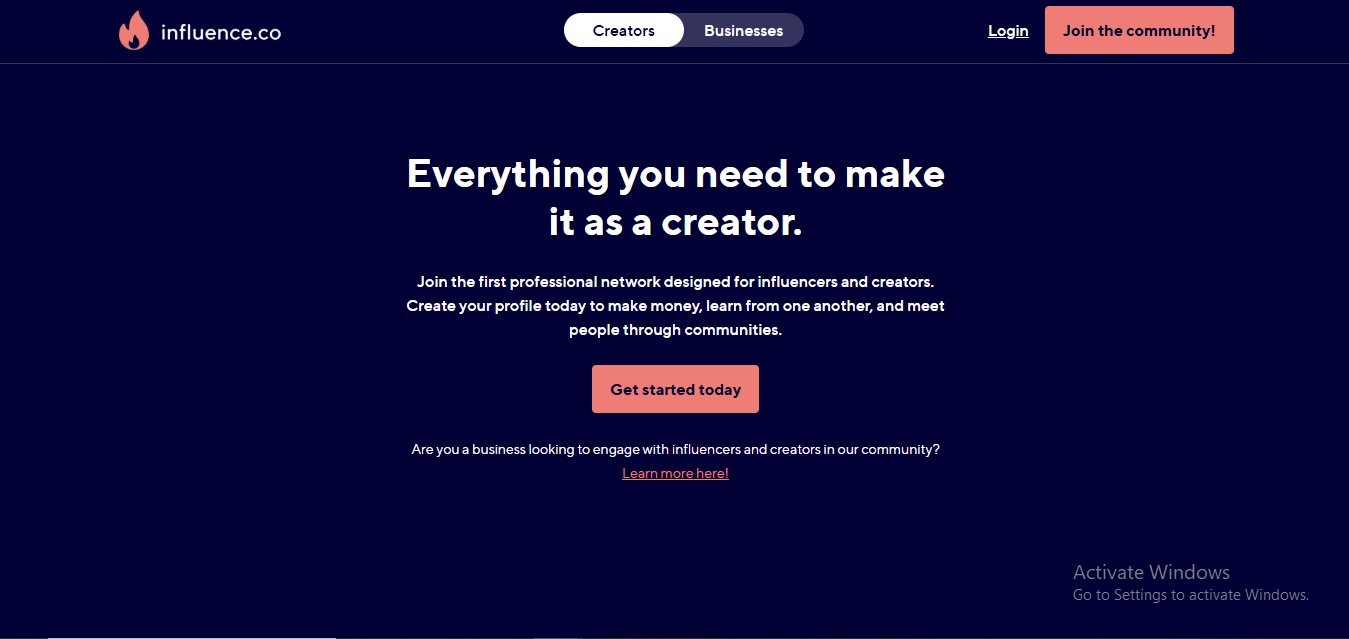
This one’s more like LinkedIn for influencers—with vibes.
What I Liked:
- Transparent creator profiles. You can stalk, I mean, research influencers in peace.
- Community-centric. You can join groups, post updates—kinda like a social platform.
- Solid for networking and long-term brand-building.
What I Didn’t:
- Less about campaign management, more about discovery and DIY.
- Analytics and campaign tracking are basic.
Features:
- Creator database
- Social-style profiles
- Network-building tools
Pricing:
Freemium model. Paid plans add pro search tools and campaign invites.
20. Influencer.com
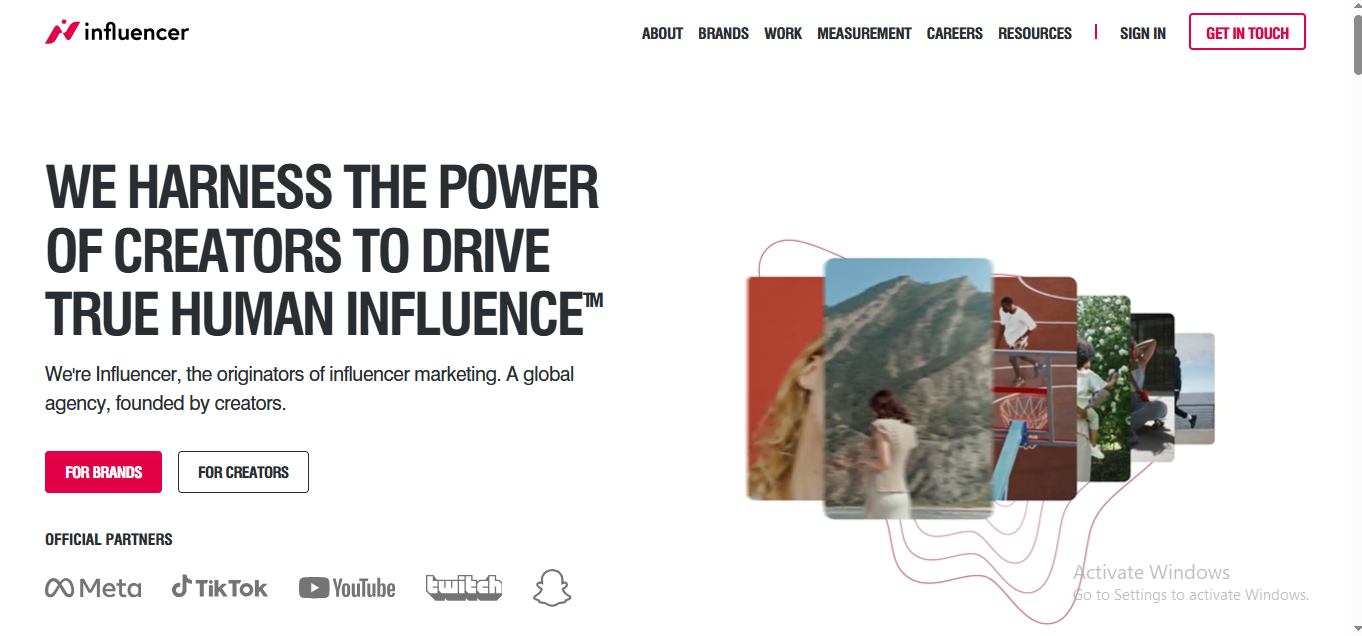
Not to be confused with “influencer marketing.” These guys actually own the name. Power move.
What I Liked:
- Insanely polished UX. Feels like a premium fashion brand’s app.
- Global reach, strong for cross-border collabs.
- Managed services are chef’s kiss if you’re scaling.
What I Didn’t:
- Definitely enterprise-focused.
- Not a DIY dream—more like white-glove treatment, which is $$$.
Features:
- Full-service influencer campaign management
- Creator performance scoring
- Data-driven strategy
Pricing:
Custom and premium. Don’t show up unless you’ve got brand cash or an agency behind you.
21. Later
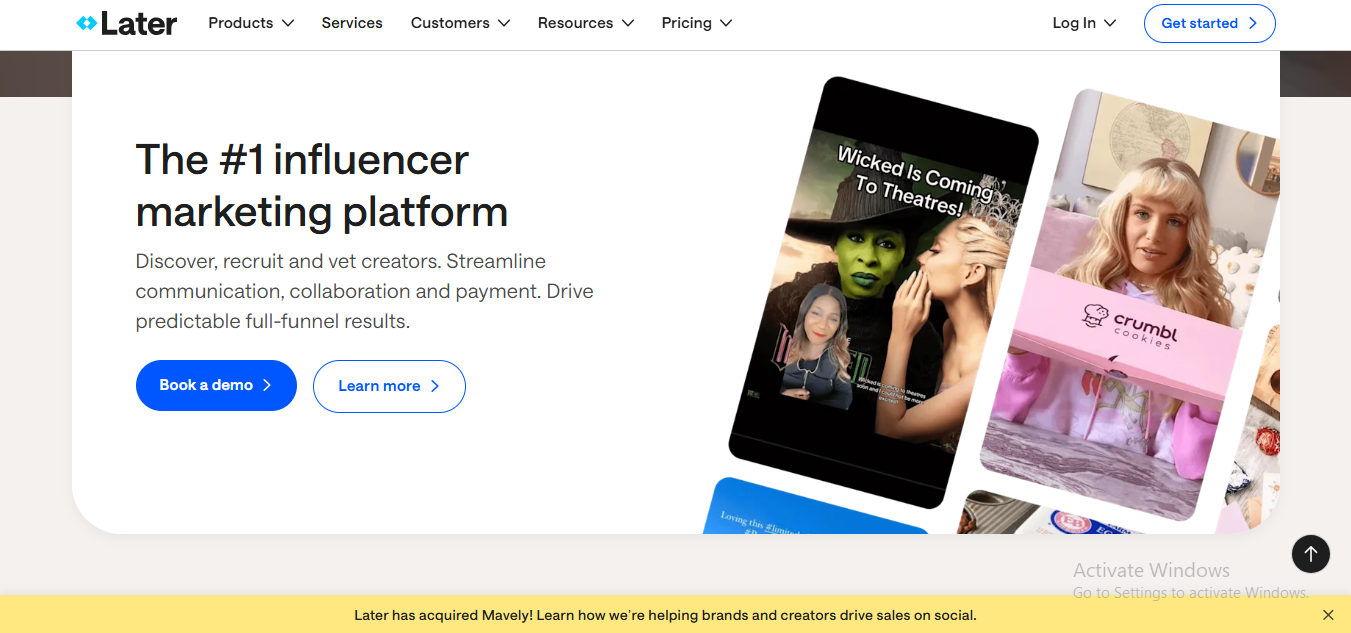
Started from the Instagram planner, now we here.
What I Liked:
- Love that Later evolved into creator campaigns.
- Already loved it for social scheduling, so bundling that with influencer discovery? Genius.
- Built-in analytics across social and collabs.
What I Didn’t:
- Influencer side of the platform is still growing—so kinda limited right now.
- Better for Instagram/TikTok; not great if your people are on YouTube or Twitch.
Features:
- Visual content planner
- Creator discovery
- Performance tracking
Pricing:
Affordable! Starts around $25/mo for basic tools. Influencer add-ons cost extra.
22. Shout
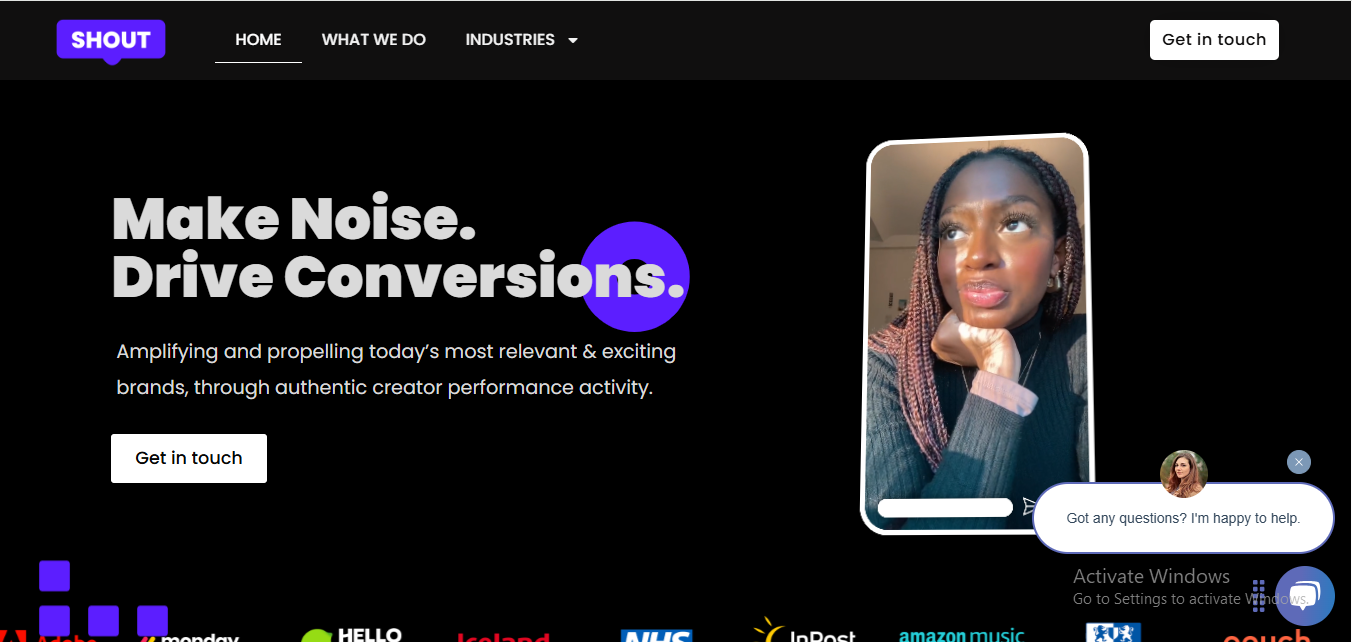
A newer face, but definitely one to watch—like a Netflix original that ends up trending.
What I Liked:
- Super fresh UI. Very Gen Z-friendly.
- Influencer marketplace with real pricing clarity.
- Great for short-form UGC collabs and micro-influencers.
What I Didn’t:
- Still finding its footing—some features in beta.
- Not ideal for massive campaigns or agencies.
Features:
- Creator catalog
- Quick campaign launch
- Transparent pricing
Pricing:
Pay-as-you-go model. Budget-friendly AF for smaller brands.
23. Klear
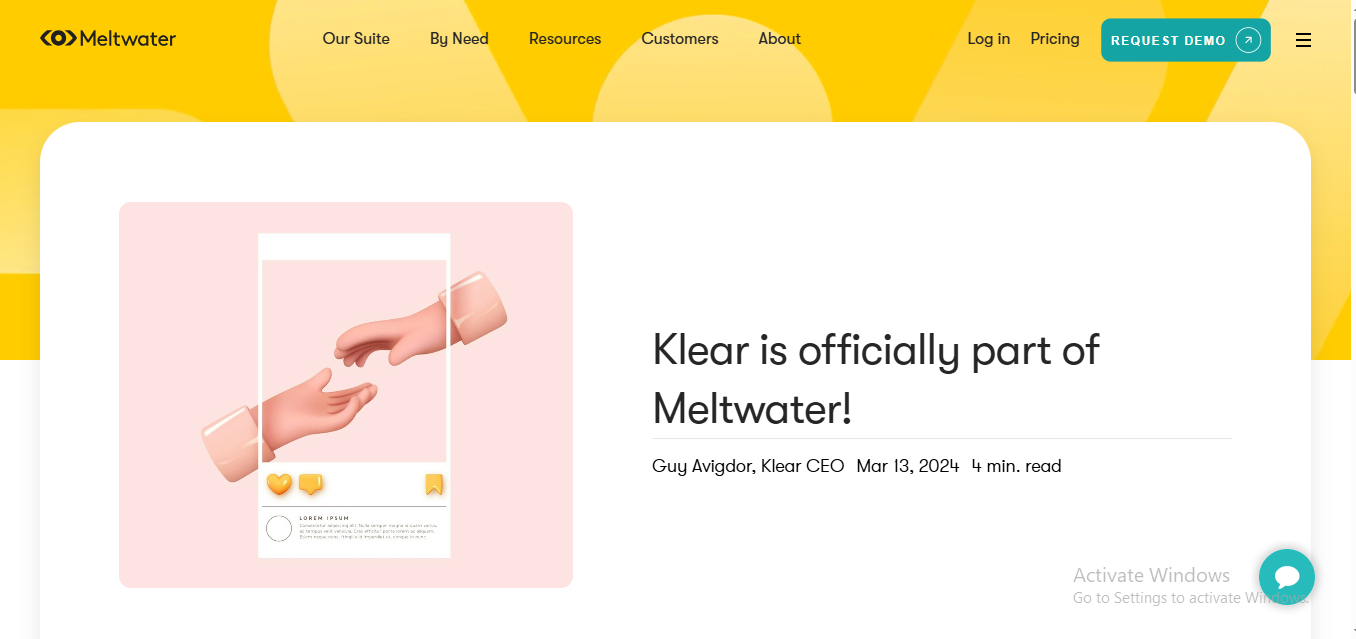
The data wizard of influencer marketing. If Hermione had a marketing agency, she’d use Klear.
What I Liked:
- Deep, DEEP analytics. Like, “knows more about your influencer’s audience than they do” kinda deep.
- Great filtering for niche audiences.
- Slick CRM system for managing long-term influencer relationships.
What I Didn’t:
- UI is a little too dashboard-y. Not very fun.
- Takes a sec to learn—definitely not plug-and-play.
Features:
- Influencer discovery with audience insights
- Campaign tracking
- Social listening
Pricing:
Premium. Agencies and larger brands will get the most bang for their buck here.
24. Brandbassador

Kinda feels like if Shopify and TikTok had a baby. Heavy on community, light on fluff.
What I Liked:
- Super tight integration with eCommerce stores (especially Shopify).
- Great for building brand ambassador armies—not just quick, one-off collabs.
- Gamified missions! Like, literally turning influencer campaigns into quests. 🕹️
What I Didn’t:
- More focused on micro-influencers and fans than celeb-type influencers.
- Takes a minute to learn the full dashboard—UI could be slicker.
Features:
- Mission-based tasks for ambassadors
- Referral tracking and affiliate rewards
- eComm integrations out the wazoo
Pricing:
Subscription-based. More affordable than the major platforms, but not exactly dirt cheap either.
25. Shout UGC
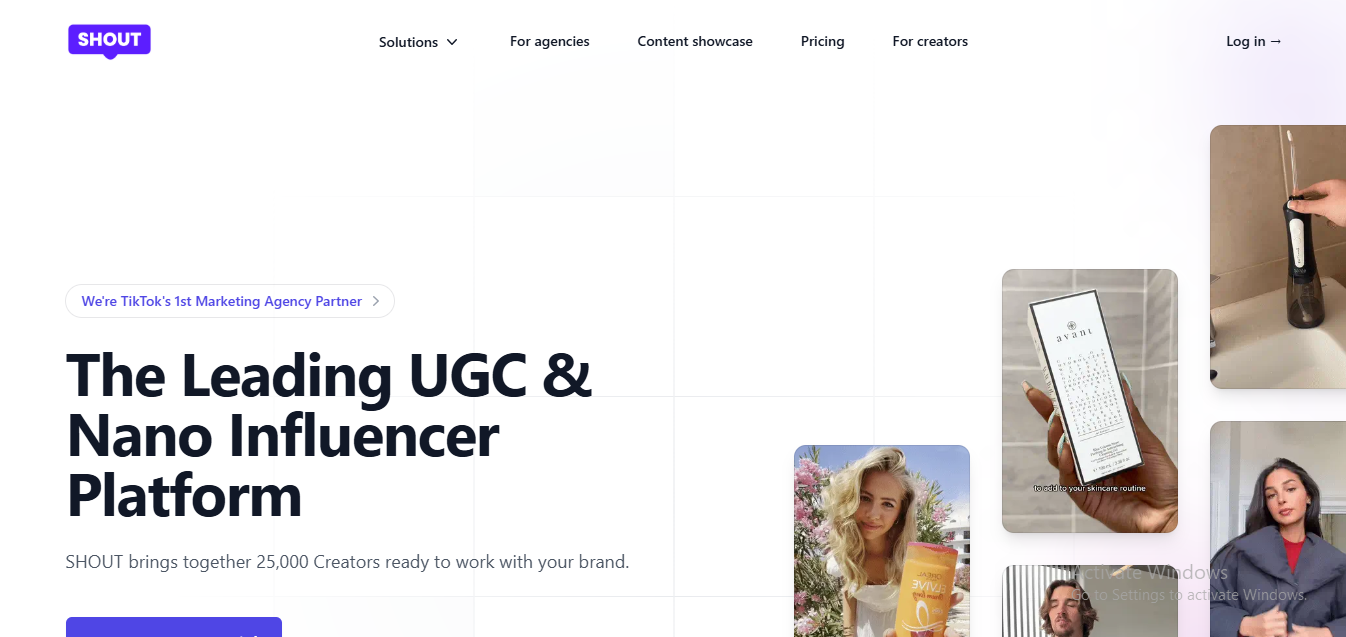
This is the plug for creators who just wanna make dope content—fast and on-demand.
What I Liked:
- Super straightforward. Brands post what they want, creators “shout” their availability.
- Great turnaround time for short-form UGC (TikTok, Insta, Reels—you name it).
- No over-engineering. Just vibes and videos.
What I Didn’t:
- Discovery tools are minimal.
- Analytics and performance tracking aren’t its strong suit.
Features:
- UGC content orders
- Creator matching based on niche
- Budget-based campaign launches
Pricing:
Very flexible. You can snag content pieces for as low as $50. Perfect for test-and-learn vibes.
26. InfluencerMarketing.ai
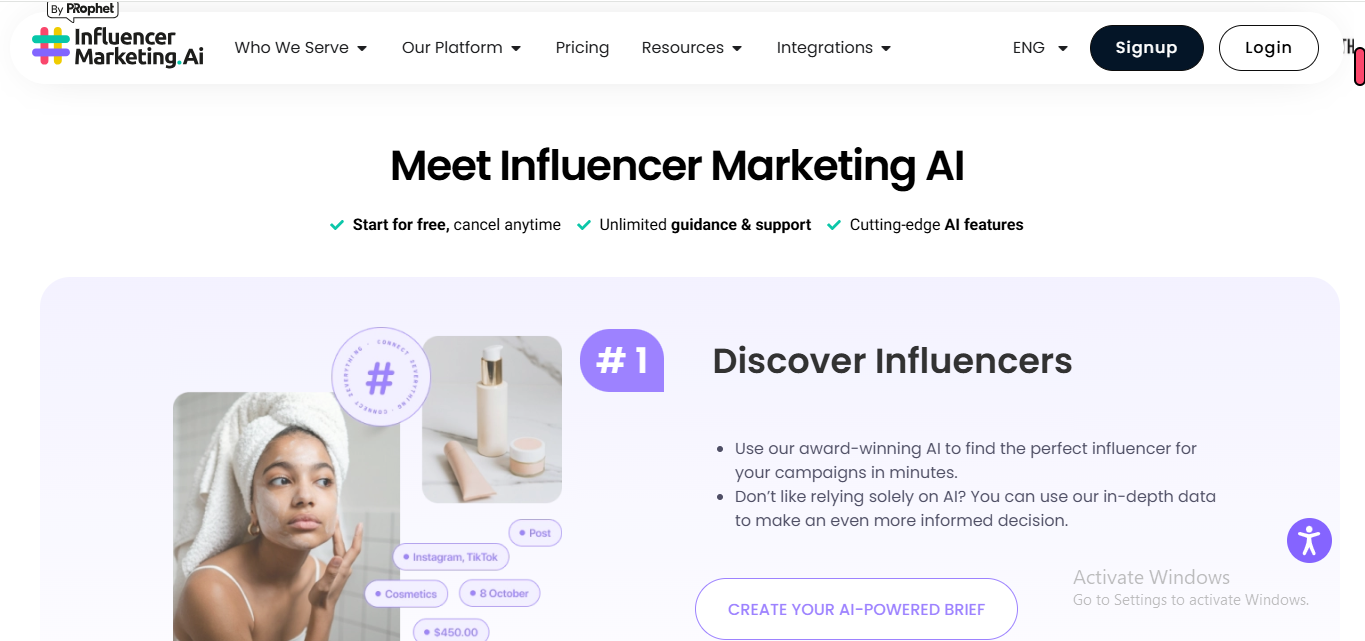
Sounds like it came out of Tony Stark’s lab—and honestly, it kinda delivers.
What I Liked:
- AI-driven influencer matching. Wildly accurate niche targeting.
- Solid performance tracking and reporting—great for scaling and optimizing.
- Loved the predictive performance feature. It’s giving “future you is proud” energy.
What I Didn’t:
- UI can be a little too… data scientist-y. Might scare off beginners.
- Limited managed service options—very self-serve.
Features:
- AI-powered discovery
- Audience and engagement analysis
- Predictive campaign ROI
Pricing:
Mid-range. You get what you pay for in terms of smart tech, but it’s not budget-friendly for beginners.
27. Traackr
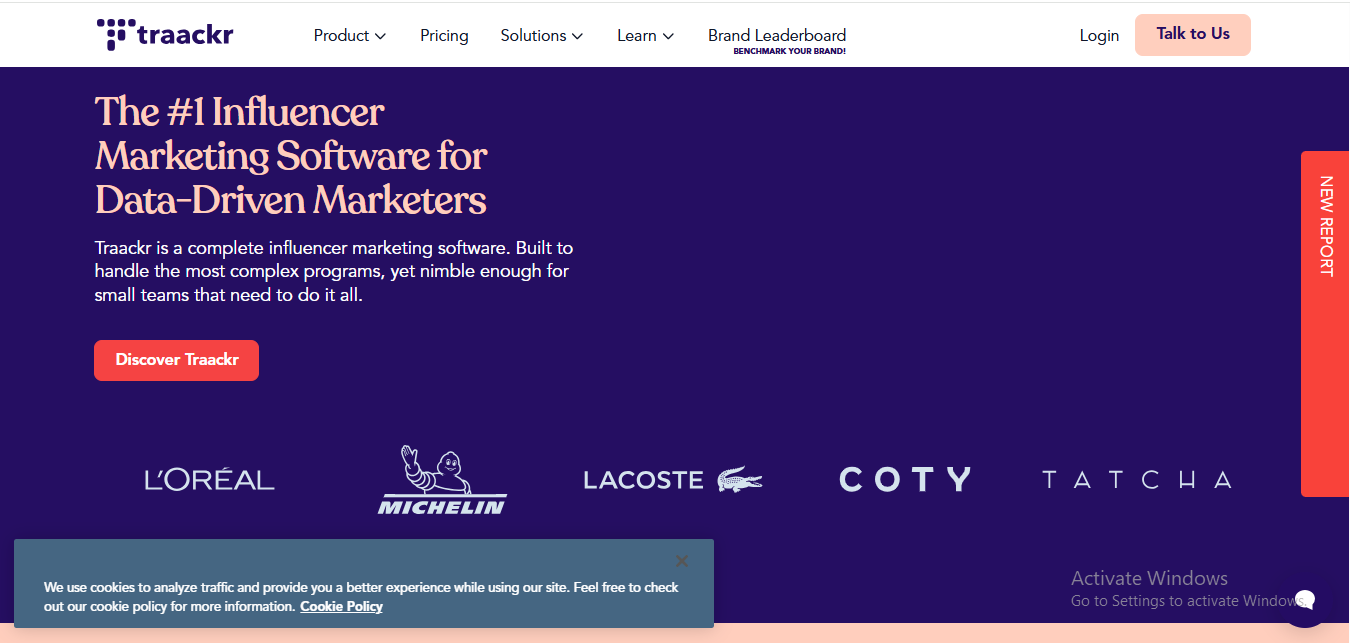
This one’s for the data nerds and enterprise beasts. Basically the HBO Max of influencer tools.
What I Liked:
- Unrivaled audience analytics—seriously, it’s deep.
- Real-time brand and competitor benchmarking.
- Very strong for compliance tracking and influencer vetting.
What I Didn’t:
- Not designed for small brands or one-off collabs.
- Feels corporate, like walking into a boardroom in sneakers.
Features:
- Influencer discovery with deep filters
- Spend benchmarking
- Cross-channel tracking and auditing
Pricing:
High-end. This ain’t your $99/month kinda tool—it’s enterprise level.
28. Meltwater
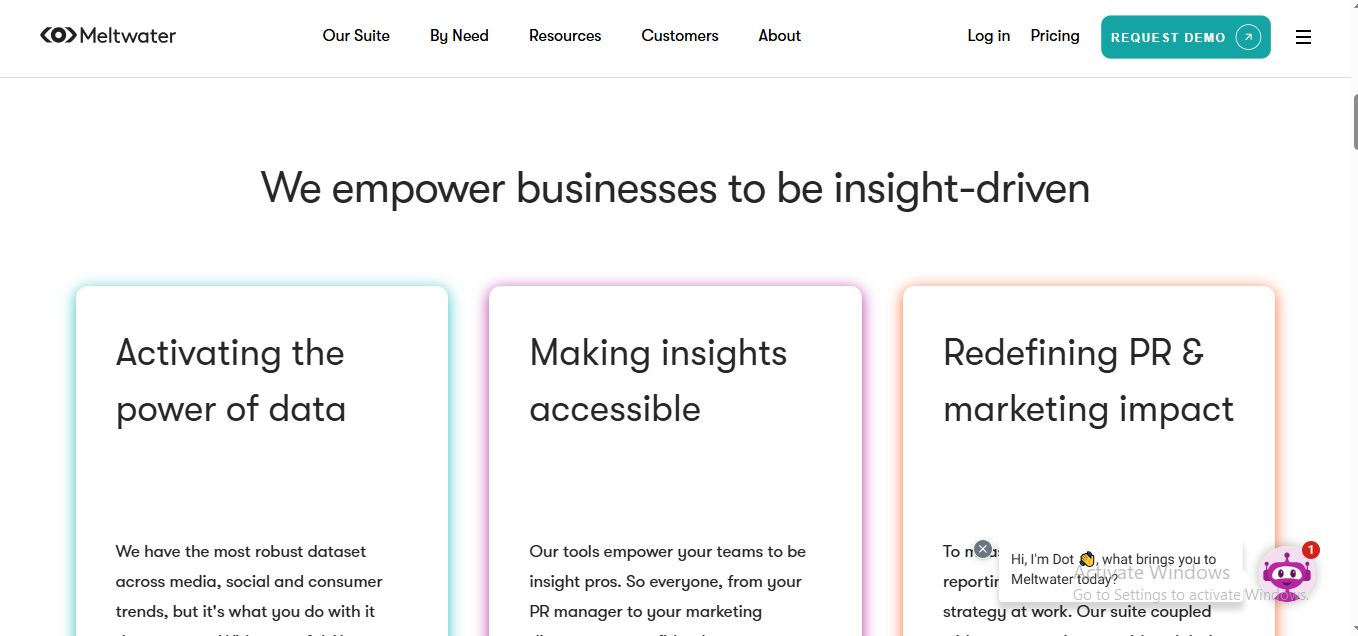
Not just an influencer platform—more like a full-on PR and media command center.
What I Liked:
- Combines influencer tracking with media monitoring and social listening.
- Loved how you can manage influencers and measure brand sentiment at once.
- Excellent for global campaigns.
What I Didn’t:
- Too much for someone just looking to run a basic campaign.
- Not very beginner-friendly—this is for PR pros.
Features:
- Influencer engagement + media tracking
- Crisis monitoring tools
- Analytics dashboard that’s ready for the C-suite
Pricing:
Enterprise-level. You’re paying for power, not simplicity.
29. The Social Cat
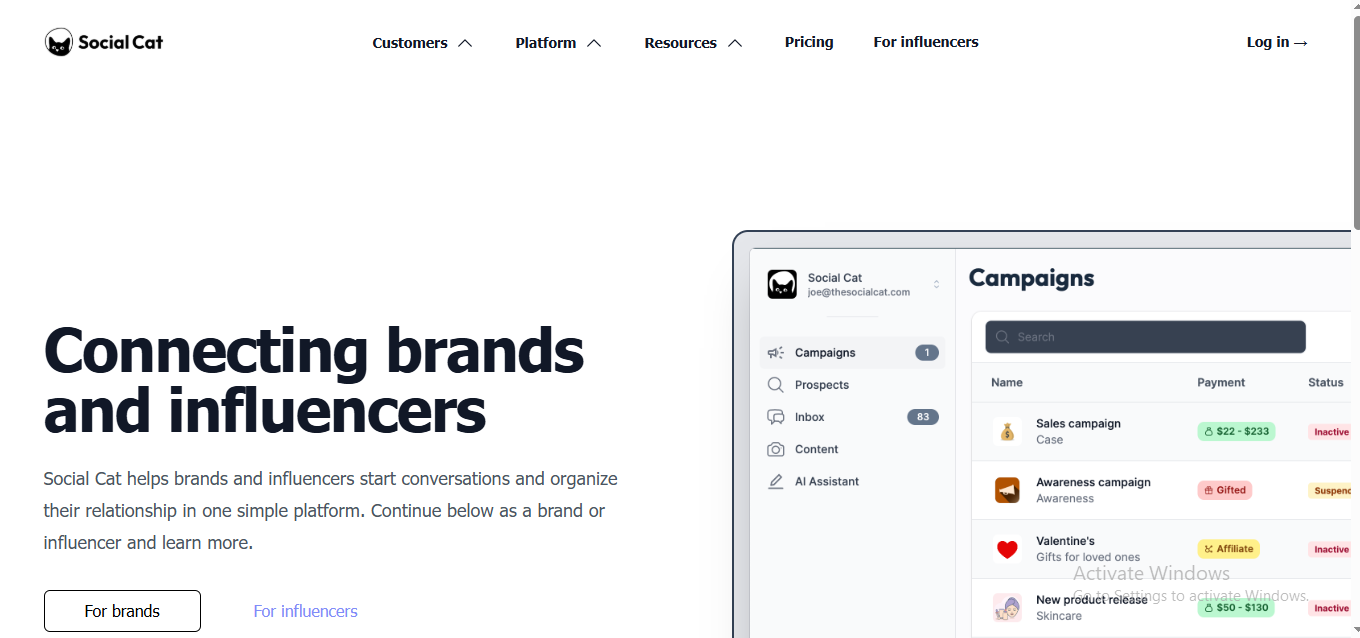
Cutest name in the game and perfect for UGC-focused, small brand energy.
What I Liked:
- Insanely easy to use. Seriously, even your grandma could run a campaign here.
- Made for micro and nano-influencers. Great if you’re a small biz on a budget.
- Loved the personal touch in their matchmaking system.
What I Didn’t:
- Only works well in specific markets (mostly EU-based right now).
- Not built for scaling to 100+ influencers.
Features:
- Creator matchmaking
- Free product exchange (or low payment) models
- Simple analytics
Pricing:
Budget-friendly. Some plans even start FREE if you’re exchanging products.
- Best Dun & Bradstreet (DNB) Alternatives for 2025 - April 26, 2025
- Best Seamless.ai Alternatives for 2025 - April 26, 2025
- Best Leadfeeder Alternatives for 2025 - April 25, 2025
